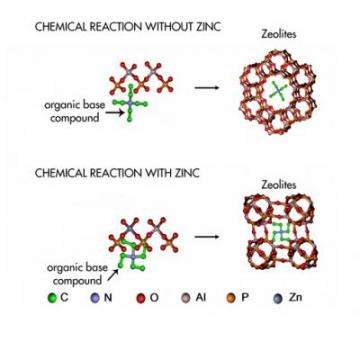Contents:


After this, the calculation is done to determine the cost which is to be replaced by the asset. Under simpler methods, companies depreciate only the purchase cost of long-lived assets, adjusted for additions and improvements. In the sinking fund method, also called the annuity method, companies add in an interest charge equal to the cost of a loan to pay for the asset. Companies include this extra cost to recognize the fact that they must finance the purchase or construction of the asset. The sinking fund method is one of several advanced methods of depreciation that are more complex than the familiar straight-line and declining-balance methods. The method is seldom used, because it’s somewhat complicated.
After ABC Ltd. recalls the sinking fund method of depreciation, it will have effectively lowered the outstanding principal to Rs. 50,000. Thus, it spread the principal payments over a period of time to nullify the effect of a large principal payment on the date of maturity. Depreciation is a continuous process until the useful life period of the asset. C is the cost of the asset and n is the useful life of the asset. It refers to a specific reserve created for a definite purpose. Unlike general reserve, the accumulated fund is only utilized for the very purpose for which it was established.
When the asset is completely written off or is to be replaced, the securities are sold and money realised by selling securities is used to replace the old asset. Depreciation fund account is closed by transfer of its balance to old asset account. The Sinking fund method of depreciation is a method of calculating depreciation where enough amount is accumulated at the end to replace the asset at the end of its useful life. Here the amount of depreciation is charged to a sinking fund account which is invested in various government bonds and securities. The interest earned from these securities is used to replace the asset.
- The balance at bank before realization of investments was $20,000.
- Now let’s see the accounting treatment of the sinking fund method of depreciation.
- The sinking fund strategy is a depreciation technique for an asset, thus producing enough money to replace it at the end of its useful life.
- Further, invest this amount of annual depreciation outside business each year except last year.
- The sinking fund method is mainly used by large-scale industries, such as utility companies, that require expensive, long-term assets to function.
The sinking fund method is a technique, where an asset is depreciated while generating enough money to replace it at the end of its own useful life. As depreciation charges are incurred to reflect the asset’s value, the same matching amount of cash is also to be reinvested. These funds sit in a sinking fund account and generate the interest. We will chalk the details further to know about the sinking fund method in detail. In the sections, the prevailing concept of sinking funds is to be enunciated. However, the sinking fund method requires the use of a separate asset replacement fund for each asset, so it can result in an unusually complex amount of accounting.
Sinking Fund Method of Assets Depreciation
This is a method which gives advantages from the point of view of recovery of capital invested. In order to make sinking fund at Rs.1,00,000, the depreciation amount in last year is suitably adjusted. Based in Greenville SC, Eric Bank has been writing business-related articles since 1985. Hearst Newspapers participates in various affiliate marketing programs, which means we may get paid commissions on editorially chosen products purchased through our links to retailer sites. It must be calculated accordingly before the profits are shared in dividends.
The asset is shown at its cost value in the balance sheet while the depreciation accumulated separately on the depreciation fund is placed on the liabilities side of the balance sheet. Companies rarely use the sinking fund method of depreciation because of its complexity. An alternative sinking fund formula simply subtracts the salvage value from the purchase cost without taking the present value. Under this method, the numerator is $800,000 minus $67,388, or $732,612. It is a great method for calculating depreciation, but it involves many critical calculations.
Sinking Fund Method of Assets Depreciation FAQs
Another problem is that investment rates will vary over the life of the asset, so the amount accumulated in the fund will probably not match the asset’s original cost. Also, the replacement cost of the asset may have changed over its life, so the funded amount may exceed or be short of the actual purchase requirement. In the sinking fund method of depreciation, a fixed depreciation charge is made every year and the interest is compounded on it annually.
Why a Capital Gains tax is necessary – The Standard
Why a Capital Gains tax is necessary.
Posted: Wed, 26 Apr 2023 20:15:34 GMT [source]
Funds from operations, or FFO, refers to the figure used by real estate investment trusts to define the cash flow from their operations. As depreciation is incurred, a matching amount of cash is invested, usually in government-backed securities. This method provides liquid funds at the end of economic life of the existing asset to replace it with a new asset. The amount accumulated as profit during the useful period of the asset can be used for the replacement after its expiration period. Sinking Fund Bonds are the ones that are backed by a sinking fund, especially for the repayments.
How to Calculate Compound Interest Rates
Her expertise covers a wide range of accounting, corporate finance, taxes, lending, and personal finance areas. First, you need to determine the amount of depreciation to be charged on the asset. For this purpose, you can use the Sinking Fund or Annuity Table. Usually, companies opt for this method when the cost of the concerned asset is high. This is because the amount required to replace these assets is huge.
- For replacement, companies create a separate reserve called Depreciation Fund.
- Our team of reviewers are established professionals with decades of experience in areas of personal finance and hold many advanced degrees and certifications.
- This is because they are safe in comparison to other marketable securities.
However, the method is appropriate in certain industries, such as regulated utilities, where the return on investment is fixed and the required long-lived assets are expensive. The formulas for this method require present value calculations. Additionally, companies may also use the sinking fund method of depreciation for real estate assets. Different scenarios may apply to real estate assets, but one of the most common is depreciation for lease renewals.
TaxCloud (Direct Tax Software)
But the amount is not invested because at the end of the last year, old asset is replaced by new one which will necessitate the selling of all investments. This meant that the company can either purchase the bonds back at random for the market price or the face value, whichever is lower. Thus, ABC Ltd. chooses any bonds to repurchase based on their serial numbers. While purchasing the bonds, it will lower the outstanding principal. There can be limitations on the amount or percent of bond issues which can be repurchased per the fund provisions. The booked value of fixed assets that have affected a declination is what depreciation is.
Under depreciation fund method, funds are made available for the replacement of asset at the end of its useful life. The depreciation amount is fixed and remains the same year after year and is charged to profit and loss account every year through the creation of “depreciation fund” or “sinking fund”. The amount of annual depreciation is invested outside the business every year in good securities bearing interest at a specified rate. The aggregate amount of interest and annual provision is invested every year.
Form 424B5 KURA SUSHI USA, INC. – StreetInsider.com
Form 424B5 KURA SUSHI USA, INC..
Posted: Mon, 10 Apr 2023 07:00:00 GMT [source]
As a common term that is generalized, the word depreciation means the decline of the value of property over time. However, in accounting ‘depreciation’ is the expiration cost of the fixed asset. And the assets we mentioned here are physical assets except for land. All other assets do have only a limited period of usefulness. The profit or loss on sale is transferred to the depreciation fund account.
The amount set aside as depreciation is such that this, with compound interest, will be sufficient to meet the cost of a new asset, less scrap value, if any, for replacement. The amount, which is credited in the Depreciation Fund, is invested in gilt-edged securities. The interest on such investment is also invested in similar securities. When the asset becomes useless, the investments are sold away and thus new asset can be acquired without disturbing the financial position. Some companies or organizations also use the double-declining balance method, which results in a large amount of depreciation expense.
Prime Cost Depreciation Method
For companies who want to put the money aside to purchase a replacement asset upon the full depreciation of the old one, here the sinking fund method may be a good option to be used. In most situations, sinking funds invest in assets backed by the government, such as Treasury notes, bills, and bonds. Investments which suit the length of the life of the asset are typically used, but it is possible to recycle short-term investments. The investment amounts are determined by the depreciation schedule of the asset. Enterprises use depreciation over time to invest an asset, not just during the period it was purchased. One of the biggest challenges of depreciation is determining how much to expense.
Sinking Fund Definition, Types, and Real-World Example – Investopedia
Sinking Fund Definition, Types, and Real-World Example.
Posted: Sat, 25 Mar 2017 20:05:55 GMT [source]
This depends upon how much Depreciation will accrue each year and what period is to be covered. If Depreciation is $10,000 and the firm wants the fund to grow to $25,000 within 5 years, it has to set aside $2,083 each year as investment in its sinking fund account. The Sinking Fund Method is a technique used to calculate the annual Depreciation of an asset.
After calculation of depreciation, we get the tax benefits and also the replacement cost too. The sale process of sinking fund investments will be utilized in a new asset purchase. The sinking fund method of assets depreciation is ideally suited for plant and machinery, as well as other wasting assets that require replacement. The reduction in the value of the equipment and other property of the power station every year is known as depreciation. Companies use depreciation to expense an asset over time, not just in the period that it was purchased. The major differences between sinking fund depreciation and annuity method of depreciation.
Periodic investments equivalent to depreciation amount are made outside the business. The company invest these funds in readily saleable securities. Moreover, the interest earned from these investments is also invested . The sinking fund method of assets depreciation is also known by other names, including the redemption fund method and amortization fund method.

Our GST Software helps CAs, tax experts & business to manage returns & invoices in an easy manner. Our Goods & Services Tax course includes tutorial videos, guides and expert assistance to help you in mastering Goods and Services Tax. ClearTax can also help you in getting your business registered for Goods & Services Tax Law. Explain the concept of machine hour rate depreciation method. Alternative Depreciation System is a depreciation schedule with a straight-line recovery period that generally better reflects the asset’s income. Profit and Loss Account is burdened heavily by fixed amount of depreciation together with the cost of increasing repairs every year.

The effect would be an underestimation of the financing needed to replace the asset at the end of its service. Further, invest this amount of annual depreciation outside business each year except last year. The investments must preferably be made in readily saleable securities like government securities. The amount accumulated within this fund is invested in the securities and realized when required. The object behind creating this fund is to generate enough funds for repayment or replacement.
Lascia un Commento
Vuoi partecipare alla discussione?Sentitevi liberi di contribuire!